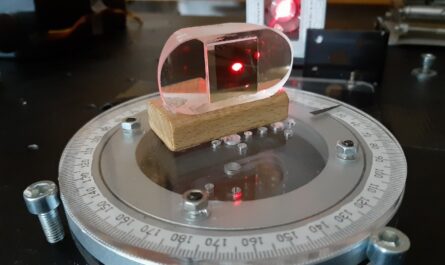What are Interstitial Lung Diseases?
Normally, this fragile tissue helps support the air sacs (alveoli) where gas exchange takes place between the air we breathe in and the blood flowing through our lungs. When the interstitium is damaged, breathing becomes difficult. ILDs are different than COPD and asthma in that they specifically affect the lung interstitium rather than the airways.
Some common causes of ILD include:
– Idiopathic pulmonary fibrosis (IPF): The most common form of ILD, IPF scars the lungs over time and gets progressively worse. Its cause is unknown.
– Connective tissue disease-associated ILD: Interstitial Lung Diseases Rheumatoid arthritis, scleroderma, and lupus can cause ILD related to the underlying autoimmune condition.
– Drug-induced ILD: Some medications like amiodarone (Cordarone) used for irregular heartbeats can potentially cause ILD.
– Environmental/occupational ILD: Exposures to things like metal dust, wood dust, silica or coal dust, certain chemicals may trigger some forms of ILD.
– ILD related to hypersensitivity pneumonitis: Exposure to things like bird droppings, mold, or other organic antigens can cause an allergic reaction in the lungs behind some ILD.
Common symptoms and signs
The most common symptoms of ILD include:
– Shortness of breath, especially during exertion or physical activity. This may develop gradually over time.
– A dry, hacking cough that may produce small amounts of sputum.
– Tiredness and fatigue.
– Weight loss unrelated to attempts to lose weight.
– Finger clubbing – an enlargement and rounding of the fingernails.
Physical exam may reveal signs like:
– Labored breathing sounds or crackles heard with a stethoscope upon lung exam.
– Low oxygen levels measured by pulse oximetry.
– Enlarged or swollen finger pads seen with nailbed clubbing.
Diagnosing Interstitial Lung Disease
Several tests are usually required to properly diagnose ILD and determine its exact cause:
– Pulmonary function tests (PFTs): Help measure how much air the lungs can hold and how well they can move air in and out. May show a restrictive lung defect.
– Chest X-ray: May show signs of scarring or changes in lung volume. Provides a starting point.
– High-resolution chest CT scan: Currently the best tool to detect signs of ILD like reticulation (scarring), honeycombing and ground glass opacities in a detailed cross-sectional view.
– Lung biopsy: Sampling lung tissue via bronchoscopy or surgical biopsy may be needed in some cases to narrow down the specific ILD and confirm features under the microscope. Carries more risk than other tests.
Treatment approaches for Interstitial Lung Disease
Treatment depends on the specific ILD diagnosis but may involve:
– Corticosteroids like prednisone: Main anti-inflammatory medication used but does not slow lung function decline in many ILD types. Benefits need to outweigh risks like side effects.
– Immune-modulating drugs: For autoimmune interstitial lung disease cases, medications like azathioprine, mycophenolate or rituximab help suppress the immune response behind lung injury.
– Pulmonary fibrosis drugs: For IPF, newer medications like pirfenidone and nintedanib have been proven to slow lung function decline in some cases.
– Lung transplant: For selected patients with end-stage lung disease, transplant provides the only chance for meaningful long-term survival. Resources and eligibility factors are considered.
– Oxygen therapy: Low oxygen levels may require supplemental oxygen delivered via nasal cannula or face mask.
– Palliative care: Breathing exercises, management of symptoms and quality of life support are also important aspects of ILD treatment, especially if transplant is not an option.
Prognosis depends on the severity and progression of the ILD and how rapidly lung function declines. Regular follow up with a Pulmonologist who specializes in ILD is critical in jointly managing treatment. While some ILD cases progress slowly, others like IPF may worsen over just a few years without suitable management to slow its course.
Living with Interstitial Lung Disease
Managing an ILD presents physical and emotional challenges. Factors in maintaining well-being include:
– Proper monitoring under a specialist’s care with periodic lung testing to track disease status.
– Compliance with treatment plan and pulmonary rehabilitation exercises.
– Attention to vaccinations and good lung health habits like smoking cessation.
– Awareness of symptom limitations and balance of activity with rest periods as needed.
– Designating a family member or friend as a key support person for rides, errands or listening.
– Seeking emotional support through counseling or patient advocacy groups online for coping strategies.
– Making advance medical directives clear and ensuring good end-of-life care and palliative options if the disease progresses.
– Applying for disability benefits if work duties can no longer be safely performed given a person’s individual functional limitations.
With diligent medical management and healthy lifestyle adaptations, many interstitial lung disease patients enjoy years of reasonable quality life. Open communication with physicians and a positive mental outlook also aid in navigating the challenges of living with a chronic lung disease.
*Note:
1.Source: Coherent Market Insights, Public sources, Desk research
2.We have leveraged AI tools to mine information and compile it



